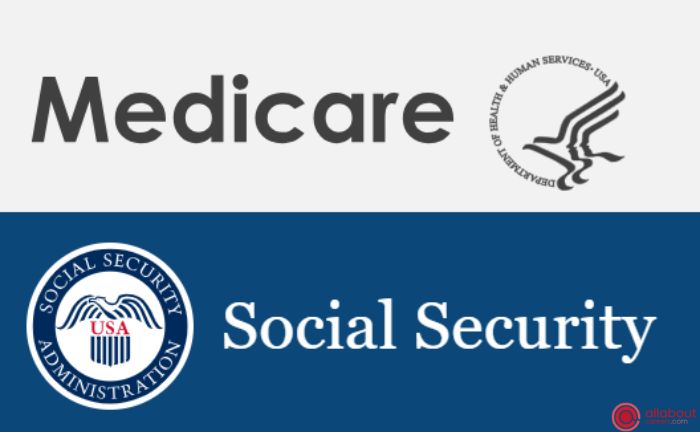The FICA (Federal Insurance Contributions Act) system might be confusing for many employees, but understanding its meaning is crucial to know how taxes and deductions are calculated on your wages. If you’ve noticed an amount addressed to “FICA” and don’t know what it is, it’s not a mistake or anything like that, but it is a tax that must be paid to the government.
FICA represents contributions that employees and employers make to fund programs like Social Security and Medicare, automatically deducted from wages and used to provide U.S. citizens Social Security and Medicare coverage.
What Is FICA?
The FICA system is a crucial piece of legislation in the United States that requires employees and employers to contribute to ensuring financial security and access to medical services by funding two fundamental programs.

On the one hand, it ensures that workers can access Social Security during retirement, disability, and death. On the other hand, it provides Medicare coverage for older people and those with specific disabilities. Payroll taxes automatically deduct contributions from employees’ wages and are sent to the federal government for administration.
What is FICA used for?
FICA provides a financial safety net for those reaching retirement age or their families in the event of a tragedy, so they can access necessary medical services and receive proper care.
Social Security and Medicare withholding rates 2024
Social Security and Medicare are two critical programs that provide financial support to millions of Americans. The contributions made by workers and their employers are calculated using specific rates on income earned by workers, and the rates vary depending on the type of contribution.
Social Security Contributions
For Social Security, the contribution rate is currently set at 6.2% for both employees and employers. This means that workers and their employers each contribute 6.2% of the worker’s income to the Social Security program.
However, there is a maximum limit on the income subject to Social Security taxes. In 2024, this limit is set at $147,000. Any income earned above this amount is not subject to Social Security taxes.
The Social Security program provides retirement, disability, and survivor benefits to eligible individuals. The number of benefits a person can receive is based on their earnings history and the years they have worked and paid into the program.

Medicare Contributions
On the other hand, the contribution rate for Medicare is currently set at 1.45% for each party, including Part A and Part B (among parts C and D). Unlike Social Security, there is no maximum limit on the income subject to Medicare taxes. This means that all income earned by workers is subject to Medicare taxes.
The Medicare program provides health insurance to eligible individuals who are 65 years of age or older, as well as to individuals with specific disabilities. The program is funded through contributions made by workers and their employers and other sources such as taxes on Social Security benefits and premiums paid by beneficiaries.
Medicare’s Plans according to the type of insurance
The Medicare program is divided into different parts, each addressing other healthcare and prescription drug coverage aspects. The plans are designed to provide coverage for specific types of medical services. Here is an explanation of the differences between the four parts and types of Medicare insurance:
Plan A
“Hospital Insurance” (as this part A is known) primarily covers inpatient hospital services. This includes coverage for nursing home care, hospice care, and some home care services.
Most people pay no monthly premiums for Part A if they have worked and paid Social Security taxes for at least 40 quarters (10 years). However, Part A has deductibles and co-payments associated with covered services.
Plan B
Also known as “Medical Insurance,” it covers medical and preventive services. This includes coverage for medical services, doctor visits, lab tests, outpatient services, durable medical supplies, and certain preventive services.
Medicare beneficiaries must pay a monthly Part B premium, and the premium amount is based on the beneficiary’s income. Part B also has annual deductibles and co-payments associated with covered services.

Plan C
Also known as “Medicare Advantage“, it is an optional program that allows beneficiaries to receive their Medicare benefits through Medicare-approved private insurance plans.
Medicare Advantage plans must provide at least the same coverage as original Medicare Parts A and B, and some programs offer additional benefits like dental, vision, or hearing care.
However, Medicare Advantage (or Medicare Plan B) has provider networks, which means beneficiaries may be limited to using doctors and hospitals within that network to receive full coverage. This program may also have different costs, such as monthly premiums, deductibles, and co-payments for covered services.
Plan D
It is Medicare’s prescription drug coverage program. Part D helps cover the cost of prescription drugs, and Part D plans are available through Medicare-approved private insurers. Medicare beneficiaries who want prescription drug coverage must enroll in a Part D plan and pay an additional monthly premium.
Each Part D plan has a drug formulary specifying which drugs are covered and at what cost tier (such as generic, preferred, or non-preferred).
References
- Manning, Liz. “Federal Insurance Contributions Act (FICA): What It Is, Who Pays.” Investopedia, Investopedia, 22 June 2005, https://www.investopedia.com/terms/f/fica.asp.”
- “Topic No. 751, Social Security and Medicare Withholding Rates | Internal Revenue Service” Internal Revenue Service | An Official Website of the United States Government, https://www.irs.gov/taxtopics/tc751#:~:text=Taxes%20under%20the%20Federal%20Insurance,also%20known%20as%20Medicare%20taxes.


